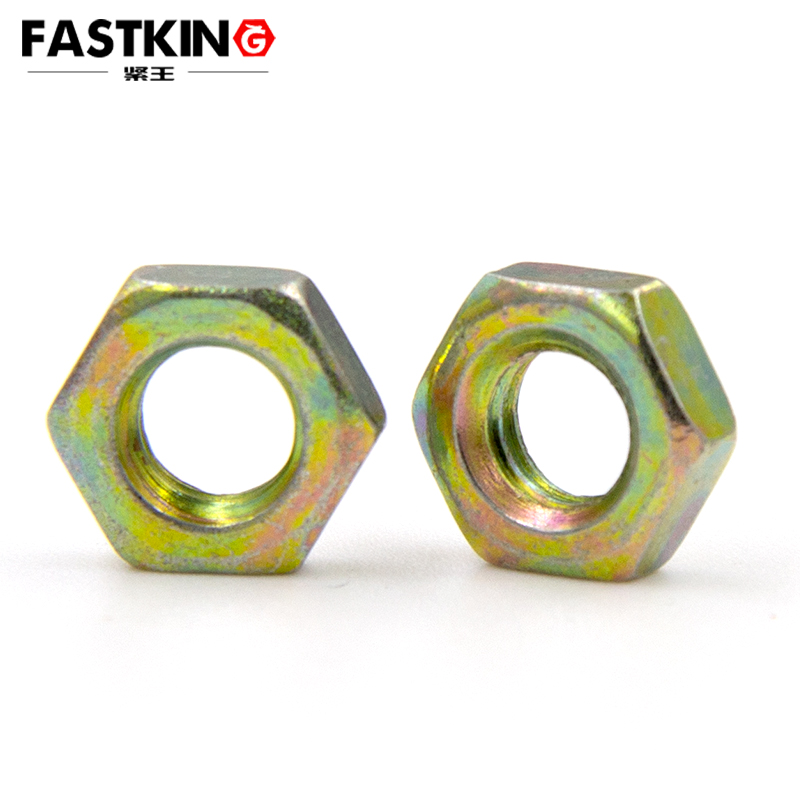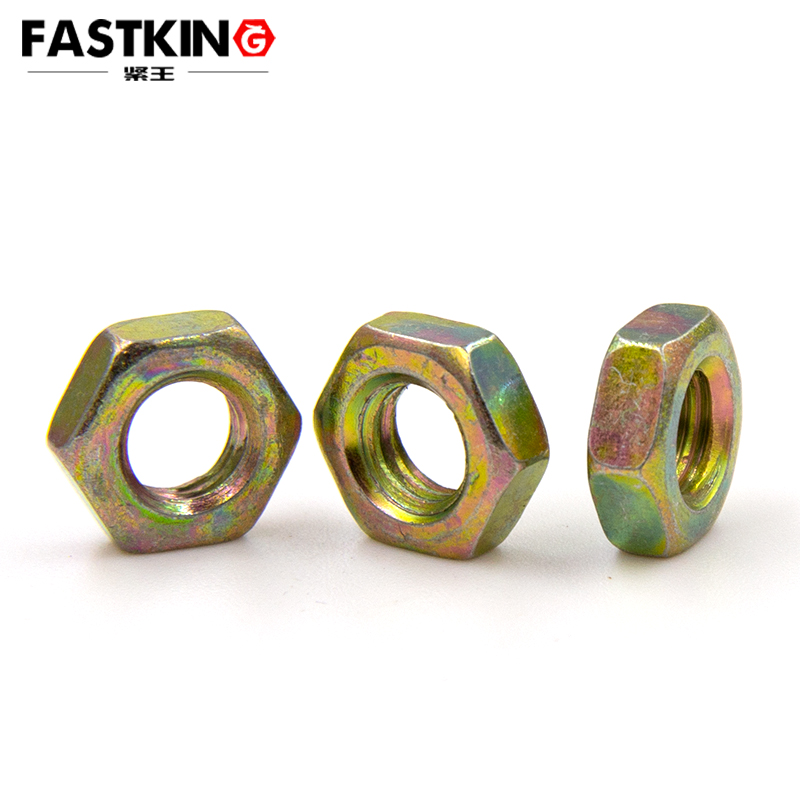This article provides a detailed introduction to the basic characteristics, application scenarios, and usage methods of hex nut . As a standardized fastener, hex nut features high strength, corrosion resistance, and standardized dimensions, making it widely applicable in fields such as mechanical manufacturing, construction engineering, automotive industry, electrical equipment, and furniture assembly. The article elaborates on the selection principles, installation steps, tightening methods, and maintenance points of GB52 hex nuts, emphasizing the importance of proper usage. By mastering this knowledge, the reliability and safety of fastened connections can be ensured, improving project quality and efficiency.
Keywords hex nut; ; fastener; mechanical connection; installation method

Introduction
Hex nuts, as one of the most commonly used fasteners in mechanical connections, play a vital role in various engineering and manufacturing fields. The hex nut is a specific type of nut regulated by Chinese national standards, with clearly defined dimensional specifications and performance requirements. Understanding the correct application scenarios and methods of hex nuts is crucial for ensuring the reliability, safety, and durability of mechanical connections. This article comprehensively introduces the characteristics, suitable scenarios, and proper usage methods of hex nuts, serving as a practical reference guide for relevant professionals.
Basic Characteristics of Hex Nut
The GB52 hex nut is a standardized fastener produced according to Chinese national standards. The "GB" in its name stands for "National Standard," and "52" indicates a specific performance grade. This nut features a hexagonal design, facilitating installation and removal with common wrenches or socket tools. GB52 hex nuts are typically made of carbon steel and undergo heat treatment to meet specified mechanical properties.
The main characteristics of hex nuts include high strength, good corrosion resistance (usually achieved through galvanization or other surface treatments), and standardized dimensions. These properties enable them to withstand significant tightening forces and working loads, making them suitable for various applications requiring reliable connections. Depending on specific requirements, GB52 hex nuts are available in multiple specifications, including different thread sizes (e.g., M6, M8, M10) and thickness grades.

Application Scenarios of Hex Nut
Due to their reliable performance and standardized dimensions, hex nuts are widely used in multiple fields. In the mechanical manufacturing industry, they are commonly employed in the assembly and fixation of various equipment, such as machine tools, conveyor systems, and agricultural machinery. These applications often involve vibration and dynamic loads, and the high-strength properties of nuts can meet these demands.
In the construction engineering sector, hex nuts are extensively used for steel structure connections, bridge component fixation, and formwork assembly. Their standardized dimensions ensure compatibility with other standard fasteners, facilitating construction and maintenance. In the automotive industry, GB52 nuts are used for engine components, chassis systems, and body structure connections, where their corrosion resistance is particularly important for vehicle performance in various environments.
Additionally, hex nuts are commonly found in electrical equipment (e.g., transformer and switchgear installations), furniture assembly (especially for detachable connections), and other industrial applications requiring reliable fastening. In these scenarios, proper selection and usage of GB52 nuts are essential for ensuring the stability and safety of overall structures.
Usage Methods of Hex Nut
Proper usage of GB52 hex nuts requires adherence to specific steps and methods. First, the appropriate nut specification should be selected based on the thickness of the connected parts and the required tightening force. It is also essential to ensure that the matching bolts or screws have threads that are fully compatible with the nuts to avoid thread damage or insufficient fastening due to mismatches.
During installation, the nut should first be threaded onto the bolt by hand to ensure proper thread engagement. Then, a suitable wrench (open-end wrench, box wrench, or socket wrench) should be used for preliminary tightening. For final tightening, the operation should be performed according to the specified torque value, and a torque wrench can be used to ensure the tightening force meets standard requirements. Over-tightening may cause thread damage or bolt stretching, while insufficient tightening may lead to connection loosening.
For applications requiring anti-loosening measures, auxiliary methods such as double-nut locking, spring washers, or thread-locking adhesives can be employed. Regular inspection of the nut's tightening status is also important, especially for connections subjected to vibration. When disassembly is required, appropriate tools should be used to avoid damaging the nuts or bolts.
Precautions
Several key points should be noted when using hex nuts. First, electrochemical corrosion between different metal materials should be avoided. For example, when using steel nuts on aluminum alloy components, insulating washers should be considered. Second, in high-temperature or corrosive environments, nuts with corresponding heat-resistant or corrosion-resistant surface treatments should be selected.
During installation, ensure that the threads are clean and free of foreign objects. Damaged threads should be replaced promptly. For critical connection points, torque checks should be conducted according to relevant standards, and records should be maintained. During storage, nuts should be kept dry to prevent rust from affecting their performance. If cracks, deformation, or thread damage are found on a nut, it should be replaced immediately and not used further.
It is particularly important to note that nuts have specific strength grades and should not be mixed with nuts of other grades, especially in load-bearing or safety-critical applications. Proper usage and maintenance of hex nuts can ensure long-term reliability and safety of connections.

Conclusion
As a standardized fastener, the GB52 hex nut plays a significant role in various industrial fields. By understanding its basic characteristics, application scenarios, and proper usage methods, its performance advantages can be fully utilized to ensure the reliability and safety of mechanical connections. Proper selection and installation of GB52 nuts not only improve project quality and efficiency but also extend equipment service life and reduce maintenance costs.
In practical applications, the appropriate nut specifications and matching fasteners should be selected based on specific usage environments and requirements, and installation and maintenance should be strictly performed according to standard operating procedures. Only in this way can GB52 hex nuts achieve optimal fastening effects under various working conditions, providing reliable connection guarantees for all types of projects and equipment.
